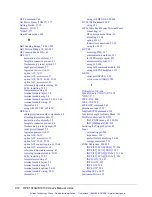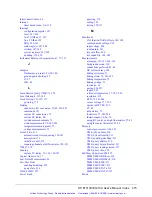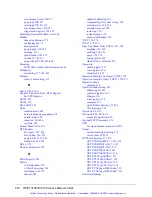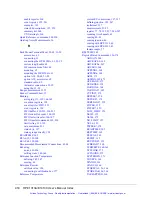
Shielded, twisted-pair lead wire generally does a good job of keeping high
frequency common mode noise out of the amplifier, provided the shield is
connected to the HP E1313/E1413 chassis ground through a very low
impedance. (Not via the guard terminal - The HP E1313/E1413 guard
terminal connection shown earlier in this manual does not consider the high
frequency Ecm problem, and is there to limit the shield current and to allow
the DUT to float up to some DC common mode voltage subject to the
maximum
±
16 volt input specification limit.)
This conflicts with the often recommended good practice of grounding the
shield at the signal source and only at that point to eliminate line frequency
ground loops, which can be high enough to burn up a shield. We recommend
that you follow this practice, and if you see high frequency common mode
noise (or suspect it), tie the shield to the HP E1313/E1413 ground through a
0.1
µ
F capacitor. At high frequencies, this drives the shield voltage to 0 volts at
the HP E1313/E1413 input. Due to inductive coupling to the signal leads, the
Ecm voltage on the signal leads is also driven to zero.
Reducing Common
Mode Rejection
Using Tri-Filar
Transformers
One HP E1413 customer determined that greater than 100 dB CMR to 10 MHz
was required to get good thermocouple (TC) measurements in his test
environment. To accomplish this requires the use of tri-filar transformers
which are an option to the HP E1586A Rack Mount Terminal Panel. (This also
provides superior isothermal reference block performance for thermocouple
measurements.) This works by virtue of the inductance in the shield connected
winding presenting a significant impedance to high frequency common mode
noise and forcing all the noise voltage to be dropped across the winding. The
common mode noise at the input amplifier side of the winding is forced to 0
volts by virtue of the low impedance connection to the HP E1413 ground via
the selectable short or parallel combination of 1 k
Ω
and 0.1
µ
F. The short
cannot be used in situations where there is a very high common mode voltage,
(DC and/or AC) that could generate very large shield currents.
The tight coupling through the transformer windings into the signal Hi and
Lo leads, forces the common mode noise at the input amplifier side of those
windings to 0 volts. This achieves the 110 dB to 10 MHz desired, keeping
the high frequency common mode noise out of the amplifier, thus
preventing the amplifier from rectifying this into an offset error.
This effectively does the same thing the shielded, twisted-pair cable does,
only better. It is especially effective if the shield connection to the
HP E1413 ground cannot be a very low impedance due to large DC and/or
low frequency common mode voltages.
The tri-filar transformers do not limit the differential (normal mode) signal
bandwidth. Thus, removing the requirement for “ slowly varying signal
404 Wiring and Noise Reduction Methods
Appendix F
Artisan Technology Group - Quality Instrumentation ... Guaranteed | (888) 88-SOURCE | www.artisantg.com
















































